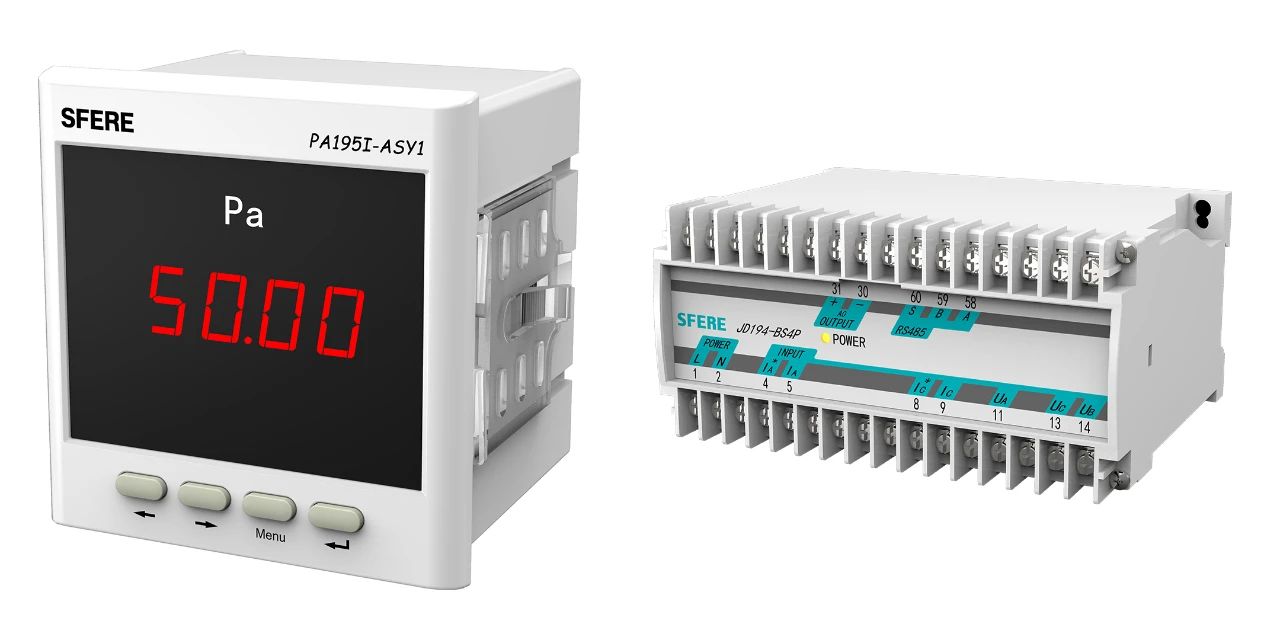.png?v=v1)
.png?v=v1)
2021.04.23
The industry generally needs to measure all kinds of electric and non-electric parameters, such as current, power, temperature, pressure, speed, angle, etc. The industry widely uses 4 ~ 20mA current signal to transmit these analog quantities, so as to realize the transmission of field data to the control room or display equipment hundreds of meters away.
Why does the transmitter choose DC 4 ~ 20mA as the transmission signal?
1. Considering the safety of field application
The key point of safety is explosion-proof, and the spark energy caused by the upper limit of 20mA current is not enough to ignite gas. At the same time, the static and dynamic power consumption to maintain the normal operation of the instrument is reduced to the minimum. The power supply voltage of the transmitter that outputs DC 4 ~ 20mA standard signal is usually DC 24V. The main reason for using DC voltage is that the capacitance and inductance with large capacity can not be used, you only need to consider the distributed capacitance and inductance of the connecting wire between the transmitter and the instrument in the control room. For example, the distributed capacitance of a 2mm² wire is about 0.05μF/km; the inductance of single wire is about 0.4mh/km; It is much lower than the value of detonating hydrogen, which is very beneficial to explosion-proof.
2. The current source is better than the voltage source in signal transmission
Because the distance between the field and the control room is far, when the resistance of the connecting wire is large, if the voltage source signal is used for remote transmission, a large error will occur due to the voltage division of the wire resistance and the input resistance of the receiving instrument; if the current source signal is used for remote transmission, as long as there is no branch in the transmission circuit, the current in the circuit will not change with the length of the wire, so as to ensure the accuracy of transmission.
In addition, the amplitude of noise voltage in the industrial field may reach several V, but the noise power is very small, so the noise current is usually nA level, which brings very small error to 4-20mA transmission; The internal resistance of the current source tends to infinity, and the wire resistance in series in the circuit does not affect the accuracy, so it can transmit hundreds of meters on the ordinary twisted pair; Due to the large internal resistance and constant current output of the current source, a sampling voltage of 5V can be obtained by placing only a 250 ohm resistor at the receiving end. At the same time, the current noise of nA level is very weak to the voltage noise of the receiver with low input impedance.
3. The reason of choosing 20mA as the maximum signal current
The maximum current selection of 20mA is based on the consideration of safety, practicality, power consumption and cost. The safety spark instrument can only use low voltage and low current, 4 ~ 20mA current and DC 24V are also safe for flammable hydrogen. The detonation current for DC 24V hydrogen is 200mA, which is much greater than 20mA. In addition, the selection of 20mA also takes into account the connection distance between the field instruments and the load, as well as the power consumption and cost, the requirements for electronic components and power supply.
4. The reason of choosing 4mA as the signal starting current
Transmitters with an output of 4-20mA are mostly two-wire systems. The two-wire system means that the power supply and load are connected in series, and there is a common point. However, only two wires are used for signal communication and power supply between the field transmitter and the meters in the control room. Why is the starting signal not 0ma? This is based on two points:
1. Some transmitter circuits cannot work without static working current.
2. The signal starting current is DC 4mA, which does not coincide with the mechanical zero point. This "live zero point" is helpful to identify the faults such as power failure and disconnection.

Copyright © 2019.Company Name All Rights Reserved.